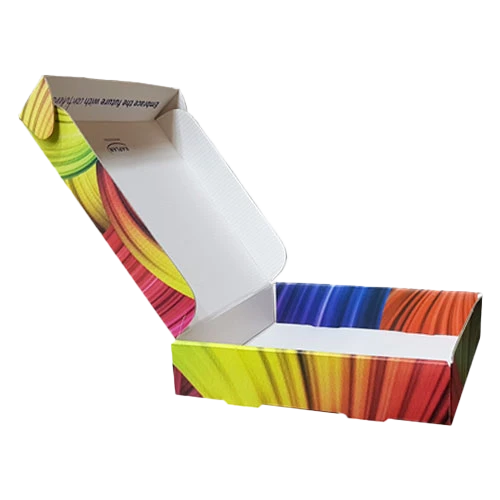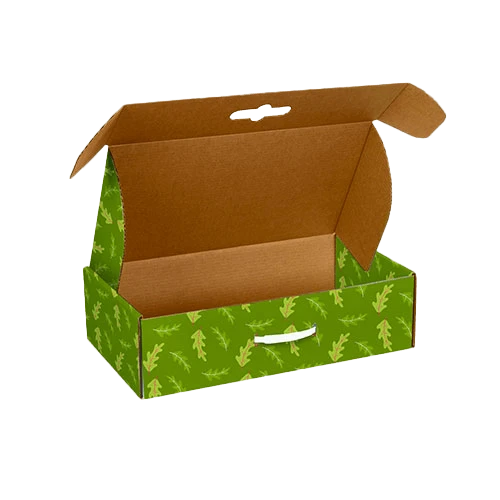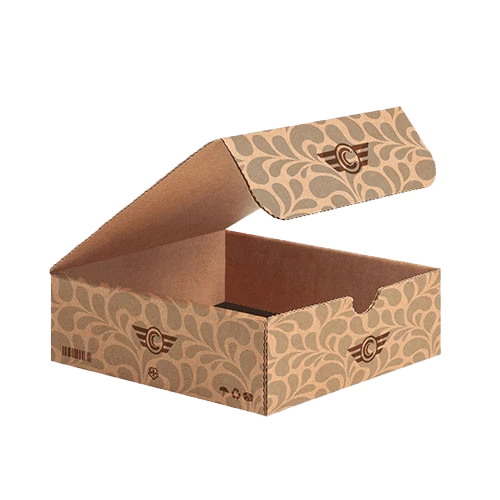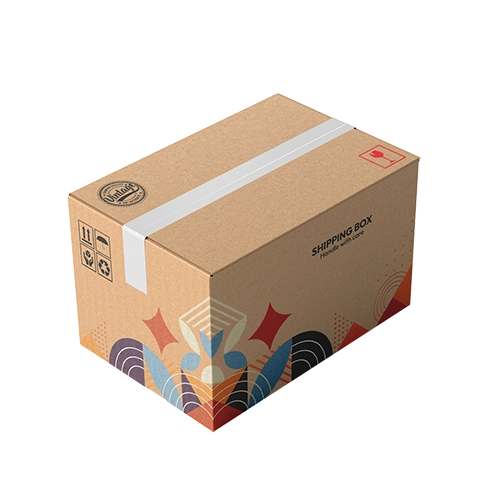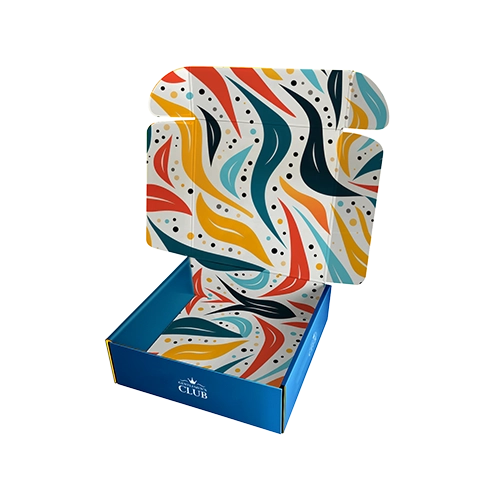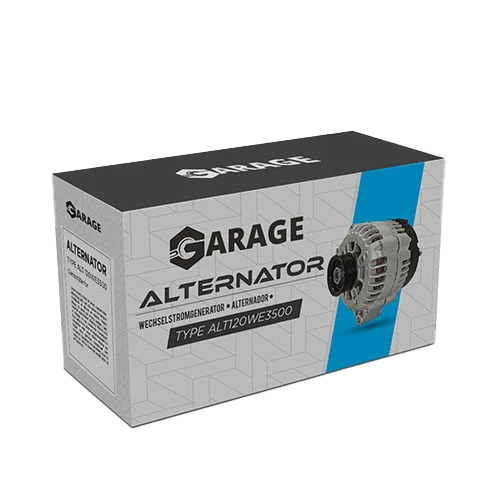Q: What are corrugated boxes? A: Corrugated boxes, sometimes also referred to by the technical name of ‘corrugated fiberboard boxes’, are boxes that are made of corrugated stock. These boxes offer more strength, durability, as well as better damage, shock, and compression resistance compared to regular cardboard boxes. Additionally, corrugated boxes are typically more cost-effective and a more weight efficient shipping alternative to plastic, wooden or metal crates or cases Q: What does the term ‘flute’ refer to in the context of corrugated packaging? A: All corrugated stock comprises of two or more flat paperboard sheets glued on one or more layers of a wavy-shaped corrugation medium. The two paperboard sheets are known as ‘linerboard’ and the wavy-shaped medium is called ‘flute’. It is the flute that is the source of the structural strength in a corrugated fiberboard. Flute is generally available in various thickness options such as E-flute and B-flute in order to cater to different durability requirements.
The wavy-pattern of the flute is typically visible to some degree on corrugated packaging as a series of parallel lines. The visibility of these lines can be minimized by using a thicker cardboard sheet instead of linerboard during the corrugation manufacturing process. We suggest that customers should let us know of any visual or aesthetic requirements at the time of getting a price estimate for your project in order to ensure accurate pricing.
Q: What does 3-ply corrugated stock and 5-ply corrugated stock refer to? A: 3-ply corrugated stock has one sheet of flute glued in between two sheets of paperboard. This type of corrugated stock is widely known as ‘single wall corrugated stock’ and is the most common choice for making cost-effective corrugated boxes and inserts. On the other hand, 5-ply corrugated stock has two sheets of flute alternatively layered between three sheets of linerboard. Also known as ‘double wall corrugated stock’, this version of corrugated stock is sturdier and is suitable for heavier products. Q: Do corrugated boxes always come in brown color? A: No, corrugated boxes can be brown or white on the inside as well as the outside. The boxes can also be made in a way that they are white on inside and brown on the outside and vice versa. In addition, full color printing can be done both on the inside and the outside. Q: What is the best way to measure the dimensions of corrugated boxes? A: In general, all boxes and specifically corrugated boxes are measured from the inside. We always recommend measuring dimensions from inside because the corrugated board thickness can vary. For example, a box made of B-flute will not have the same outer dimensions as a box made from E-flute. With the box open toward you, here is how to get the correct measurements for the inside of the box:
- The length is measured from the inside edge on the left to the inside edge of the right side of the box.
- The width is measured from the front inside edge to the back inside edge of the box.
- The height is measured from the top inside edge to the bottom inside edge of the box.
In addition, it is always helpful to measure and provide the dimensions of the product that is to be enclosed in the box in order to assure a good fit
Q: Can you send me samples of your custom corrugated packaging? A: Yes, we can send samples of our recent print orders. You can submit a sample kit request and our sales representative will be in touch so that appropriate corrugated box samples can be shipped out to you. Q: Is white considered a printing color? A: In simple terms it depends on the color of stock. Most of the times white is the default color of the underlying paper and thus is simply recognized as the absence of any ink and hence not considered as a printed color. On the other hand, in the case of corrugated boxes, white may be considered a printed color if the target surface is brown. In short, when using colored paper for particular projects, white ink may be used and is considered a printed color if any text or graphic requires it. Q: What styles or types of corrugated boxes can Packagingblue produce? A: We can produce various different standard styles of corrugated boxes. In addition, we can also produce customized boxes to fit your specific requirements. Please send us the details and we will be happy to produce a free mockup for your review. Here is a list of some of the many different types of corrugated packaging that we can produce:
| Material |
Shipping Boxes: White or Brown Corrugated Stock or Forte
|
| Material Thickness |
Corrugated Stock: 3-ply corrugated
|
| Finishing Types |
Lamination: Gloss, Matte, Sandy Matte, Soft Touch, Linen
Coating: Gloss AQ, Satin, Varnish, Spot UV, Flood UV
|
| Features |
Foil Stamping
Die Cutting
Metallic Inks
Custom Size
|
| Other Options |
Window Cutouts
Scoring and Gluing
|
| SKU# | RP-011 |
Importance of Corrugated Boxes
Corrugated boxes are a specialized type of packaging made from corrugated sheets. These corrugated sheets are manufactured using three layers of paper: an inner layer, a fluted medium, and an outer liner. These three layers make corrugated sheets strong and durable, making them an ideal material for manufacturing boxes that can withstand harsh shipping and storage conditions.
These boxes serve several essential purposes. Some of the key reasons why corrugated boxes are essential includes:
- Protection: These boxes are designed to protect the contents inside from damage during transport and storage. The wavy pattern in the corrugated material, known as a flute, provides strength and rigidity to the box, allowing it to hold and protect its contents.
- Convenience: These boxes are easy to assemble and disassemble, making them a convenient packaging option for various products. They are also easy to store and transport, as they are lightweight and take up minimal space.
- Versatility: These type of boxes come in various sizes, shapes, and styles, making them suitable for a wide range of products and applications. Using a die-cutting process, they can be custom-made to a specific shape or size.
- Cost-effectiveness: These boxes are relatively inexpensive to produce, making them a cost-effective packaging option. Additionally, they are recyclable, which can help to reduce the environmental impact associated with their production.
- Branding: This type of packaging is an ideal way to promote your brand, as it can be printed with your logo and other branding elements.
- E-commerce: These boxes are essential for e-commerce as they are sturdy, lightweight, and easy to ship, which makes them a perfect option for online retailers and businesses.
Overall, corrugated boxes are an essential packaging material that plays a crucial role in protecting products and providing convenience, cost-effectiveness, versatility, branding, and e-commerce.
There are several types of boxes made of corrugated sheets, including:
- Single-wall corrugated boxes: These boxes have one layer of corrugated material, making them the simplest and most economical type of corrugated box. They are best suited for lighter items and short-term storage.
- Double-wall corrugated boxes: These boxes have two layers of corrugated material, providing more strength and protection than single-wall boxes. They are ideal for heavier items and long-term storage.
- Triple-wall corrugated boxes: These boxes have three layers of corrugated material, making them the strongest and most durable type of corrugated box. They are best suited for heavy, fragile items and long-term storage.
- RSC (Regular Slotted Container): This is the most common type of Corrugated box. It has flaps on both sides, which can be closed with the help of adhesive or tape.
- FOL (Full Overlap Container): This box has flaps on both sides, which overlap each other when closed and provide more strength.
- HSC (Half Slotted Container): This box has flaps on only one side, which can be closed with the help of adhesive or tape.
- Die-cut boxes: These boxes are custom-made to a specific shape or size using a die-cutting process.
- Telescoping boxes: These boxes are made with two or more parts that can be adjusted to fit different sizes of products.
- Self-locking boxes: These boxes are designed to be easily assembled and locked into place without the need for tape or glue.
- Corrugated mailing boxes: These boxes are specifically designed for mailing and shipping, with reinforced edges, tear-resistant material, and pre-printed mailing labels.
The corrugation flute is a corrugation used in cardboard and other packaging materials. The wavy shape of the corrugation makes it strong and helps it to hold its shape, allowing it to protect the contents of the package. Corrugation flutes come in many sizes and styles, ranging from very thin to very thick, depending on the application.
There are different types of corrugated flutes available, including:
- A-Flute: A-Flute is the thickest flute and the most commonly used corrugated flute. It is used for heavier products that require maximum cushioning and protection.
- B-Flute: B-Flute is the second most common flute and is used for lighter products that require less cushioning and protection.
- C-Flute: The C-Flute is the third most common flute and is used for very light products that require minimal cushioning and protection.
- E-Flute: E-Flute is the fourth most common flute and is used for very small, light products that require very little cushioning and protection.
- F-Flute: The f-Flute is the fifth most common flute and is used for delicate products that require maximum cushioning and protection.
|

